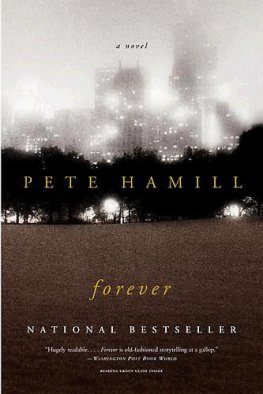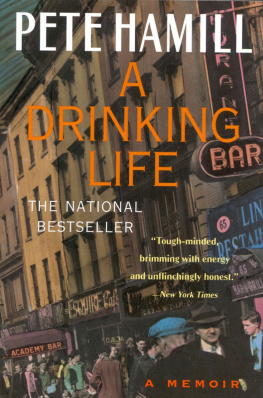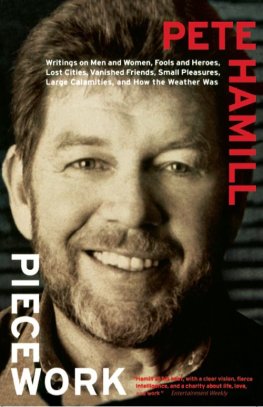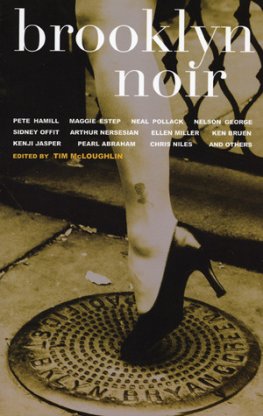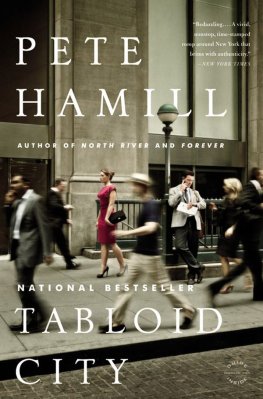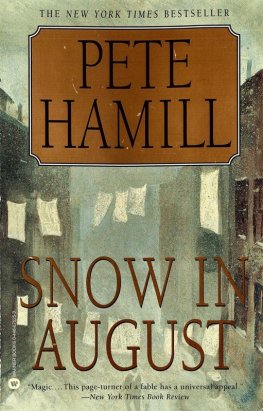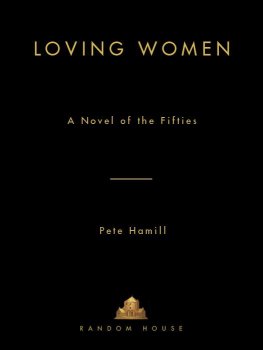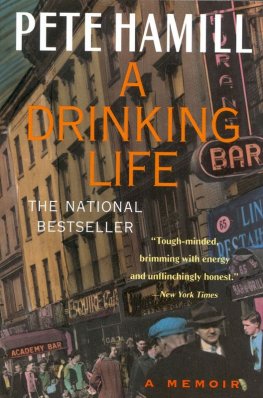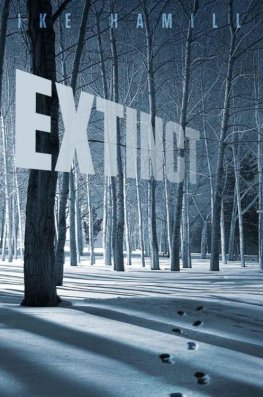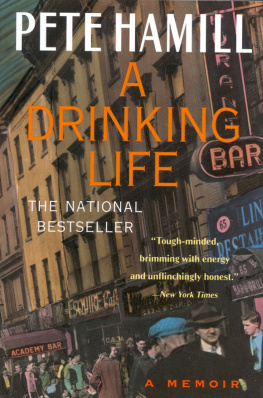Pete Hamill - Forever
Here you can read online Pete Hamill - Forever full text of the book (entire story) in english for free. Download pdf and epub, get meaning, cover and reviews about this ebook. year: 2008, publisher: Paw Prints, genre: Prose. Description of the work, (preface) as well as reviews are available. Best literature library LitArk.com created for fans of good reading and offers a wide selection of genres:
Romance novel
Science fiction
Adventure
Detective
Science
History
Home and family
Prose
Art
Politics
Computer
Non-fiction
Religion
Business
Children
Humor
Choose a favorite category and find really read worthwhile books. Enjoy immersion in the world of imagination, feel the emotions of the characters or learn something new for yourself, make an fascinating discovery.
- Book:Forever
- Author:
- Publisher:Paw Prints
- Genre:
- Year:2008
- ISBN:9781435298644
- Rating:4 / 5
- Favourites:Add to favourites
- Your mark:
- 80
- 1
- 2
- 3
- 4
- 5
Forever: summary, description and annotation
We offer to read an annotation, description, summary or preface (depends on what the author of the book "Forever" wrote himself). If you haven't found the necessary information about the book — write in the comments, we will try to find it.
Forever — read online for free the complete book (whole text) full work
Below is the text of the book, divided by pages. System saving the place of the last page read, allows you to conveniently read the book "Forever" online for free, without having to search again every time where you left off. Put a bookmark, and you can go to the page where you finished reading at any time.
Font size:
Interval:
Bookmark:
Forever
a novel
Pete Hamill
This book is for
Fukiko Aoki Hamill
who let me count the ways
ONE
Ireland
And what a people loves it will defend.We took their temples from them and forbade them, for many years, to worship their strange idols.They gathered in secret, deep in the dripping glens, Chanting their prayers before a lichened rock.
JOHN HEWITT, THE COLONY, 1950
1.
There he is, three days after his fifth birthday, standing barefoot upon wet summer grass. He is staring at the house where he lives: the great good Irish place of whitewashed walls, long and low, with a dark slate roof glistening in the morning drizzle. Standing there, he knows it will turn pale blue when the sun appears to work its magic.
The boy named Robert Carson loves gazing at that house, basking in its permanence and comfort. On some days, a wisp of smoke rises from the chimney. On other days, the early-morning sun throws a golden glaze upon its white facade. It is never the same and always the same. He sees the small windows like tiny eyes in the face of the house, the glass reflecting the rising sun. The front door is mahogany, salvaged from some drowned ship along the shores of the Irish Sea, as tightly fitted in that doorway now as any man could make it. Theres a low half-door too, placed in front of the full mahogany door like a snug wooden apron. During balmy summer days, the large door is always open, welcoming light and air into the house. The breeze pushes smoke from the fire up through the stone chimney.
Robert Carson goes in, flipping the iron latches made by his father, whose name is John Carson and is called simply Da. The house is as it always is and as the boy thinks it will always be. A sweet odor of burning turf fills the air. He breathes it deeply, inhaling the ancient burned mud of the swamps beside Lough Neagh, where the peat was cut from the bog. Directly facing him is the jamb wall, running from floor to ceiling along the side of the hearth. A diamond-shaped spy hole is cut into its pine boards so that he and his father and mother can observe the approach of strangers. The boy can only do this by standing on the shoulder of the hearth.
The hearth is at the end of a large main room, but it is the center of the house, the holy place that holds the fire. A wide iron canopy rises above the hearth, carrying away the smoke, and on damp, chilly days the boy sits on one of the hand-carved low benches beside the fire. The family has few visitors, but men always sit on the right, facing the fire, so the boy does the same. The women take the bench on the left, and his mother is always there. Her name is Rebecca, but he calls her Ma. He thinks of them as a unit: Ma, Da, and me. The Carsons. To the left of the hearth is the small iron crane his father made in the forge, with its arms of different lengths, and hooks for hanging pots. His mother moves the pots back and forth, in and out of the flame, while the odors of stews and porridges and soups overwhelm the sweetness of the burning turf. There are two low three-legged chairs called creepies, cousins of milking stools. Built low in the days before chimney flues so that farmers could breathe below the smoke. One day he lifted a creepy, examined the perfect pegs that held the legs so permanently to the seat, and hugged it to his chest, thinking: This is ours, this belongs to the Carsons. Back about five feet from the hearth is his fathers own chair, made of woven rush, looking like a throne designed as a beehive. Robert Carson never sits in his fathers chair.
Beside his fathers chair is one of the many wrought-iron light holders that John Carson made in the forge, long iron poles with four arched feet and hooks that hold lanterns for his reading. They never wobble on the flagstone floor, never lose their dignity.
A wide oaken shelf spreads above the hearth and he can see with his eyes shut the objects that occupy its oiled surface: his fathers clay pipes, with their long curved stems, an old thatched horse collar that Da saved from his own youth, a carved wooden cup called a noggin, found in the mud of a bog. Da has told the boy that the noggin is a thousand years old, and Robert Carson is certain that his father is right. To the left, a mound of turf bricks rises off the floor, dried out of dark black bottom mud. The iron tools of the fire, smaller cousins of the light holders, stand as rigid as sentries.
* * *All are part of the hearth, where the fire burns low but is never allowed to go out. As the center of the house, the hearth gives off warmth and food, and is the place to which the Carsons turn in the evenings for talk and even song. On his birthday, while they faced the hearth, his mother told the boy that his magic number would be nine, for he was born on the ninth of September.
Do you see, son? You were born on the ninth day of the ninth month, his mother said, and as you grow up, lad, youll learn: Nine will be your number.
Sometimes on rainy afternoons, when his father is working in the forge, the boys mother sits beside the fire to drink tea and eat oat bread while she tells stories. The boy listens silently, the stories entering him in such a way that he later thinks they have happened to him, that he has lived them. Sometimes he drowses, while her voice makes a kind of music. They are the first stories of his life, written on a five-year-olds emptiness. He is awake and asleep at the same time, listening to the magical words, while becoming through his mothers magic the people in the stories. The fire burns steadily in the hearth, and his mother tells him that the fire should never be allowed to go out, because if it does, the soul leaves the house.
Da agrees. There were houses in Ireland, he said once, where the fire had burned day and night for more than a hundred years. In this house, he said, it had burned since John and Rebecca Carson moved in, long ago, before the boy was born. Even as she whispers stories, his mother gazes at the fire, as if seeing people or things unseen by others. Robert Carson later learns that before he was born there were two other children, his brothers, who were born and then died in another house. And when they died, Da poured water into the hearth and moved to this place to begin again. Robert Carson tries (after learning this when he is eight) to imagine those lost brothers, but no faces ever come clear. In bad dreams they have heads with shiny surfaces but no eyes or noses or mouths, and those visions wake him from his sleep. Sometimes he is terrified.
To the left of the hearth is the door to the bedroom where his mother and father sleep each night. A dresser stands outside the door, its drawers holding clothes. On its top theres a wooden tray of knives and forks and spoons, along with a clump of gorse or primrose standing in water in the familys only piece of delft: a tall vase decorated with tulips. Sometimes the boy traces with his fingers the designs on the vase, and caresses its smooth surface. Above the dresser three shelves are cut into the wall, stacked with terra-cotta plates and cups and bowls made by hand in the Mountains of Mourne. To the left is the back door, leading to the West. The room is dominated by the table behind the chairs that face the hearth, its dark planed top burnished by endless cleanings and oilings.
Sometimes he stares at the back door, the one that opens to the West. He knows that no stranger should ever leave through the back door because he would take with him the luck of the house. He knows too that when theres a death in the house, the coffin must leave through that same back door, to be taken to the West, to the setting sun and the blackness that follows.
On the ceiling, great beams cut from bog oak form a huge A, supporting the layers of thatch and sod, tied firmly with fir rods, that lie beneath the slates. His father built this house to last. The roof rests on towers of chiseled stone that form the gable ends, each slab thirty inches thick, cut so fine that they fit together without mortar. The walls are brick, stone, cut rushes that had soured, all bound together and made smooth by river mud and lime wash. They are two feet thick. A house built like a fortress. Even when he is alone, he is safe.
Font size:
Interval:
Bookmark:
Similar books «Forever»
Look at similar books to Forever. We have selected literature similar in name and meaning in the hope of providing readers with more options to find new, interesting, not yet read works.
Discussion, reviews of the book Forever and just readers' own opinions. Leave your comments, write what you think about the work, its meaning or the main characters. Specify what exactly you liked and what you didn't like, and why you think so.

